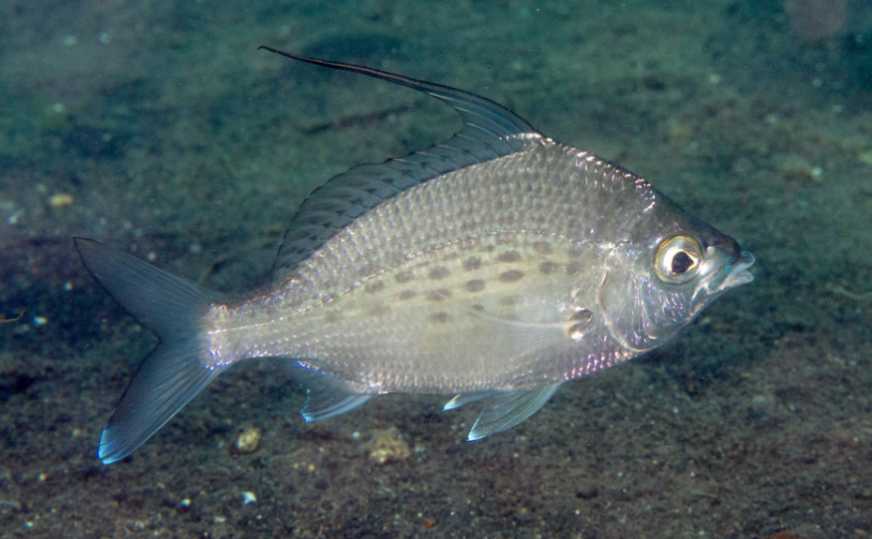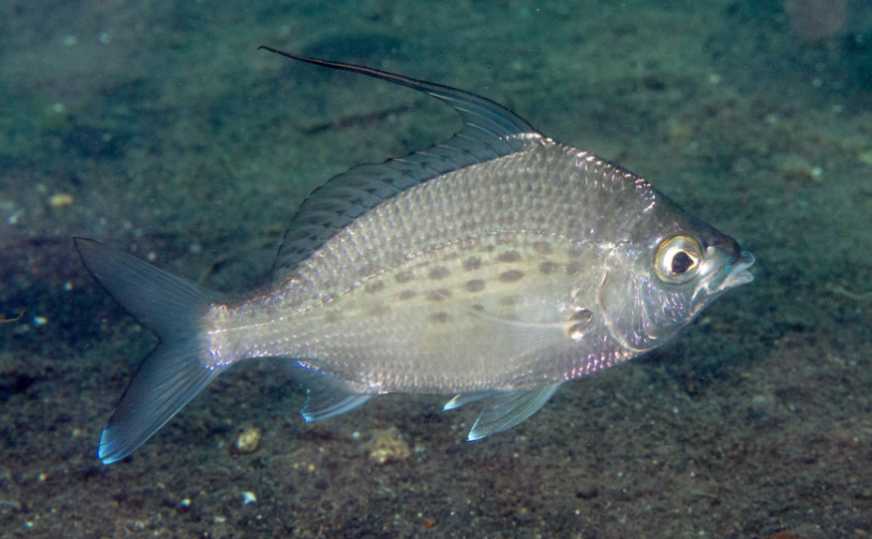Gerres filamentosus: The Longspine Mojarra of Coastal Waters
Gerres filamentosus, commonly known as the longspine mojarra or threadfin jewelfish, is an elegant species within the Gerreidae family, inhabiting the warm, shallow waters of the Indo-Pacific region. Named for its elongated dorsal fin spines and trailing filamentous rays, this fish is characterized by a sleek, laterally compressed body with a silvery-white hue, making it a striking presence in coastal ecosystems.

Source: Images from the Internet, if there is any infringement, please contact the removal of
Growing up to 30 centimeters in length, the longspine mojarra features a streamlined profile with a pointed snout and large, reflective eyes. Its most distinctive feature is the first dorsal fin, which bears several elongated spines that extend into delicate filaments, particularly in mature individuals—an adaptation that may aid in communication or camouflage. The body is adorned with a subtle golden or pale yellow tint on the dorsal side, fading to a bright silver ventrally, with faint horizontal stripes that may appear under certain lighting. A small, protractile mouth allows it to sift through sandy substrates in search of prey, primarily small crustaceans, polychaete worms, and mollusks.
Inhabiting estuaries, lagoons, and sheltered coastal bays, Gerres filamentosus is a social species that forms large schools, often seen swimming in synchronized patterns near the water’s surface. It prefers shallow waters less than 20 meters deep, where it can utilize its specialized mouth to feed on benthic invertebrates disturbed by tidal movements. During the breeding season, typically in late spring to early summer, adults migrate to slightly deeper offshore areas to spawn, releasing pelagic eggs that drift with currents until hatching. Juveniles seek refuge in mangrove forests or seagrass beds, where the dense vegetation provides protection from predators and abundant food sources.
While not a major target for commercial fisheries, the longspine mojarra is valued in artisanal fishing communities for its mild flavor and tender flesh, often caught using seine nets or traps in shallow coastal waters. However, like many estuarine-dependent species, it faces threats from habitat loss due to mangrove deforestation, coastal development, and pollution. Overfishing in some regions also poses a risk to local populations. As a key component of nearshore food webs, this species plays a role in transferring energy between benthic and pelagic ecosystems, making its conservation vital for maintaining coastal biodiversity. Efforts to protect mangrove habitats, promote sustainable fishing practices, and raise awareness about the importance of estuarine ecosystems will be essential to ensuring the long-term survival of Gerres filamentosus
-------- END --------






